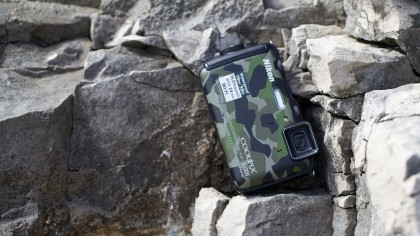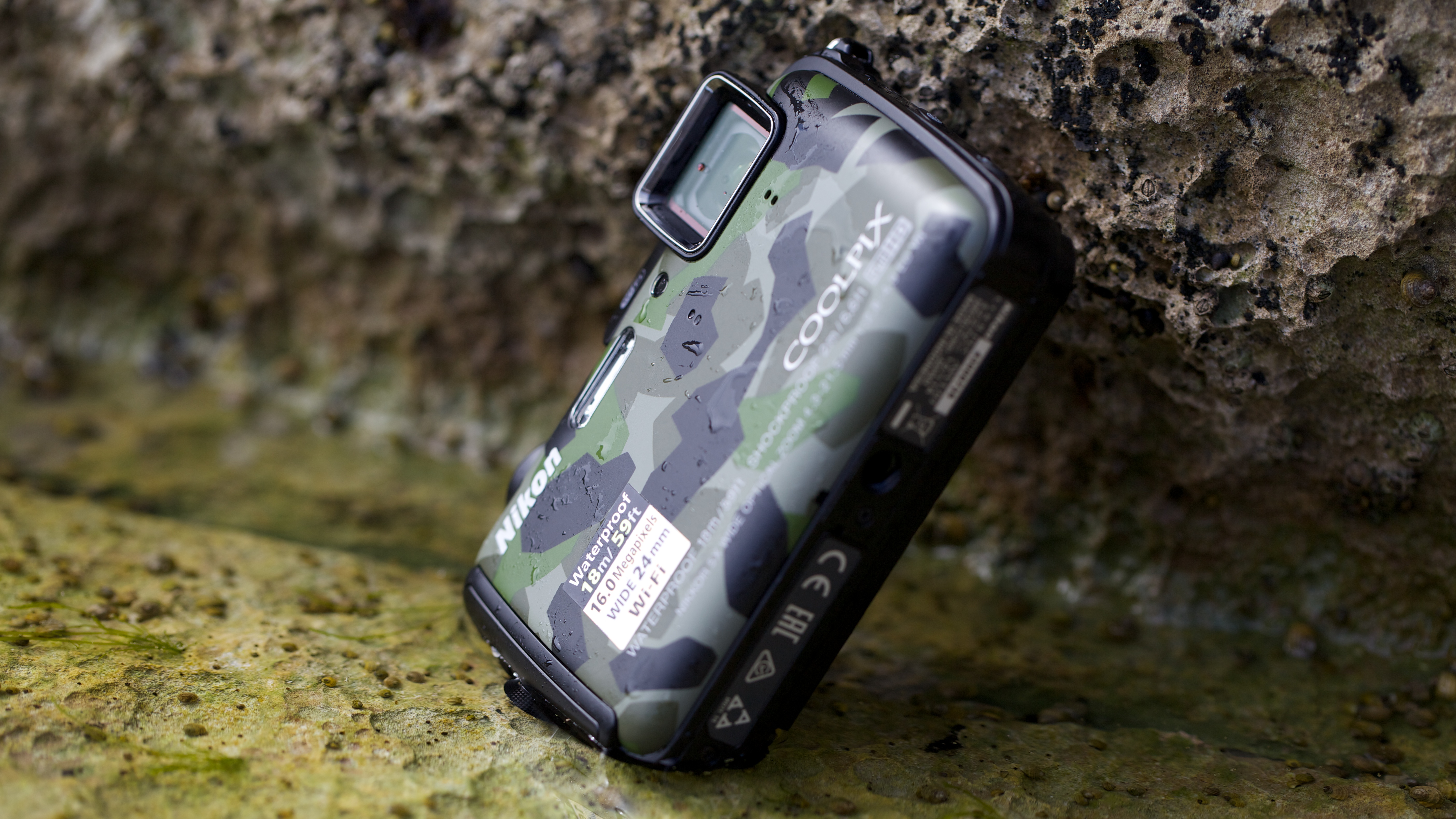Why you can trust TechRadar
The AW120 is speedy. The time lag between switching on and being ready to shoot is almost negligible, the autofocus is responsive, and its Target Finding mode does a good job of deciding what you want to focus on in a scene. If it's frequently getting this wrong, you can set it to detect faces, concentrate on the centre of the scene or even pick a target yourself, using the rear cross selector as a navigational pad to move a focus box around the screen. Pre-AF, enabled by default, runs the AF even before you've half-pressed the button, adding to the feeling of responsiveness.
The image quality produced from this slimline chassis is generally good, with reasonable detail across the frame and throughout the focal range. Distortion, even up close with the lens at its widest, is well controlled, but viewing images at 100% reveals softening and smearing. High contrast areas outside the centre of the frame show chromatic aberration, with a noticeable cyan fringe, while despite the slightly recessed position of the lens sun flare can lead to softening of images. These are edge cases, however, and in the vast majority of situations the AW120 copes well with whatever's thrown at it.

The camera's metering system is able to expose correctly for landscapes without blowing out the sky to plain white, but has a tendency to render skies in artificial-looking shades of strong blue. Other colours are reproduced accurately, but the camera prioritises highlights over shadows, occasionally leading to very dark areas in images but giving a pleasing contrasty quality to others. There were no issues with the automatic white balance setting, and high ISO noise, while not completely horrendous, makes its presence felt in speckled shadows and a lack of detail, especially when shooting at the maximum setting of ISO 6400 but creeping in from ISO 800 onwards.
After a photo is taken a screen appears offering to apply one of the Quick Effect filters. Simply half-pressing the shutter button returns you to shooting mode, and the filters screen can be turned off from the menu if you find it gets in the way. Quick Effects can be applied later from the image playback screen, as can red-eye correction, Nikon's D-Lighting dynamic range expander and limited retouching options. The last of these are a nice idea but don't work too well with such a small screen, and don't offer anything like the finesse you'd get from retouching on a computer or even a smartphone app.

Macro focusing mode, enabled directly from the rear direction pad, allows you to almost have the lens touching your chosen subject. Lens zoom is handled by a dedicated switch on the top right of the camera's rear, although again it's a small control that might be hard to use in some situations.
Verdict
While its sturdy build and water-sealing will undoubtedly make the AW120 attractive to those with daring taste in hobbies, as a general use camera it is outclassed by the competition. For the same sort of money you can get a Nikon P530 – GPS/Wi-Fi-less but with the same sort of sensor and a vastly increased zoom range, or a Canon SX600 HS, which still nets you 18x zoom, 16mp and Wi-Fi, for £100/$150 less. In the dangerous world of rugged cameras, Fuji's XP200 is cheaper and has similar specs, albeit without the GPS.
There are benefits to a rugged camera outside of scurrying up Everest or hanging out with sharks, of course - even a trip to the beach with the kids can be a dangerous outing for electronics, with sand getting stuck in the ports or salt water making its insidious way through tiny gaps in the casing. Being able to rinse your camera under the tap can be immensely useful in some situations too.
Whether £279/$346 is too much to pay for the convenience of being able to pull your camera out in the pouring rain, or throw it down wherever you please and not worry too much about it – though volcanologists may wish to note that its maximum operating temperature is a mere 40ºC – is entirely up to you.
We liked
The AW120's rugged shell, nippy performance and Wi-Fi and GPS features make for a camera that's a pleasure to use and which you don't have to worry about putting down in a puddle.
We disliked
The small controls are tricky to use wearing gloves, the screen isn't touch sensitive and the price, though typical for a rugged camera, is high.
Final verdict
The AW120 is a well-crafted, full-featured, compact, sturdy camera that works well, shrugs off water and munches swiftly through all the tasks presented to it. However, it remains defined by its rugged characteristics and is a niche product that's slightly too expensive to be recommended as a general compact.
